Faience and porcelain: what's the difference?

Both earthenware and porcelain are popular materials for tableware production. Without preliminary preparation and knowledge of the features of these materials, it will be difficult to distinguish them from each other. Therefore, before choosing dishes, you should familiarize yourself with the characteristics of such products.
Peculiarities
Such a strong similarity between faience and porcelain is explained by the fact that the main material for their production is clay. During production, other components are added to it: mineral and organic. Each material has its own elements, so the composition is still different.
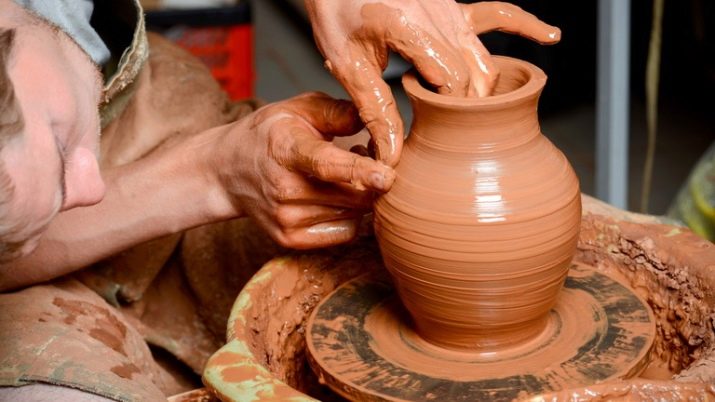
Faience
Faience is a subspecies of ceramics made from fired clay. It also contains silicate, white clay, and quartz. The resulting product has small pores and is rather brittle.
To ensure the durability of such dishes, they are additionally covered with a special glaze.

The range of products is very wide: you can easily purchase salad bowls, plates, tea pairs, napkin holders, large dishes and much more. Cookware is not too expensive as it is relatively easy to manufacture.
There are several advantages of faience:
- acceptable price;
- opacity;
- strength.
There are also several disadvantages:
- does not tolerate heat;
- after a while, it begins to crack, and the cracks are tiny;
- with improper care, the glaze cracks and “creeps”.
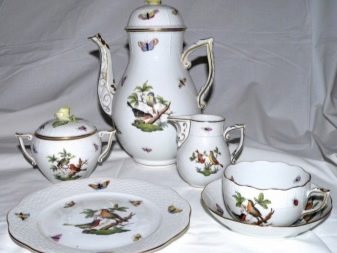
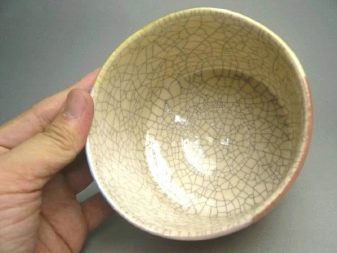
Porcelain
As for porcelain, here we will observe the same composition, but the proportions will be different: unlike earthenware, porcelain contains less clay. Products made from such material are durable, there are no pores in them, transparency can be observed. Of course, dishes will be much more expensive than earthenware, since porcelain is more difficult to obtain.
For everyday use, such dishes are rarely bought, mostly elegant sets for the holiday or antiques.
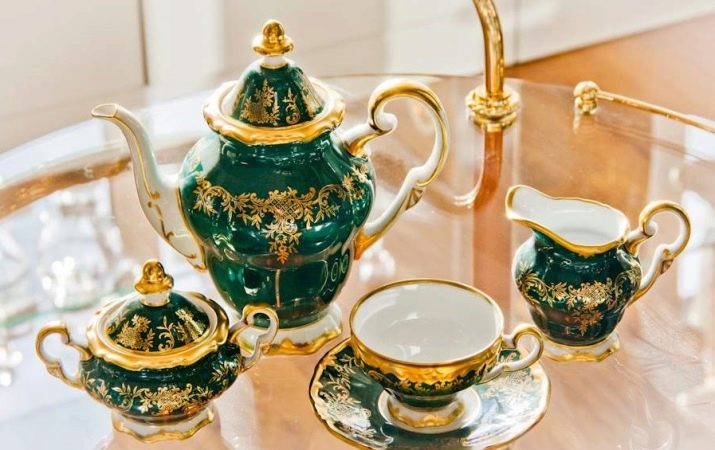
Let's note some advantages:
- sophisticated and elegant appearance;
- quality;
- complete environmental friendliness of products;
- excellent thermal conductivity.
Among the cons:
- high price;
- the need for careful care;
- low impact resistance.
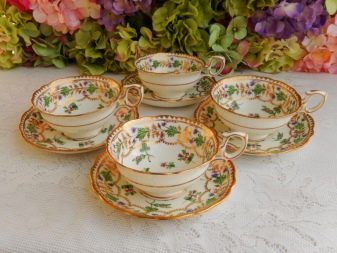
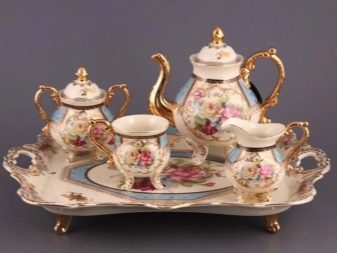
Production technology
The first step in making both materials is preparing the ingredients. To make earthenware, water is added to the mixture of clay and kaolin, and then sand. After straining the mixture, it is exposed to filters, put in a crush and left for some time in a cool room. Then the mass is sent to the second crushing machine. During the production of porcelain, the ingredients are also mixed, after which they are treated with several types of stirrers. Then it is filtered, filtered and left cool. After the required time has elapsed, the mixture is sent under the press.
At the second stage of making earthenware, the masters will have to shape the mass and then burn it. The porcelain is shaped with plaster, followed by a thorough drying. And only after drying, the porcelain is fired, using special ovens for this, the temperature in which must be strictly controlled.
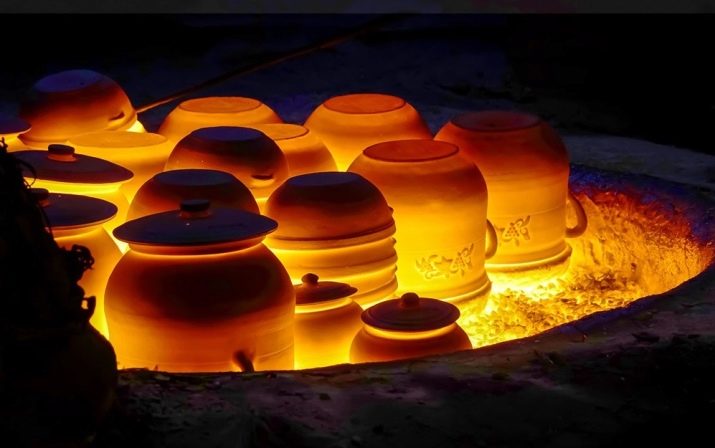
The third step is the same for both varieties. They are glazed, painted and decorated. For painting earthenware, ready-made stencils are usually used, porcelain can be painted by hand.
It is worth noting that hand-painted cookware has higher prices.
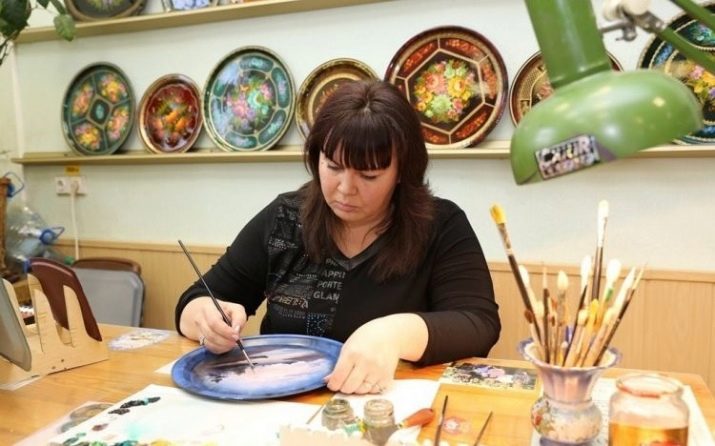
The main differences
Products made from materials such as earthenware and porcelain are very beautiful. Despite the external similarity, they differ from each other in physical characteristics and production technology. Let's consider what is the difference between the materials and compare them.
- More than 85% of faience is clay, which is why the products are so water-permeable. There is much less clay in porcelain, most of the composition is occupied by minor components such as feldspar, white clay, etc. These characteristics are also due to the fact that porcelain can resemble glass.
- In manufacturing, porcelain is fired at very high temperatures; for earthenware, these indicators will be much lower.
- Porcelain does not absorb moisture at all, but faience does not differ in this quality due to the fact that most of it again consists of clay.
- Porcelain is transparent, glass-like, light penetrates through it, but the second described material has absolutely no transparency.
- If you knock on the dishes, then the porcelain will emit a clear melodic ringing, while the products from faience will respond with a dull sound.
- Porcelain does not age, it is eternal, but cracks resembling craquelure form on the surface of faience models. However, this does not affect the value, since over time such a pattern cannot be avoided.
- Porcelain dishes will be easier if you compare exactly the same items from both materials.
- Porcelain, as a rule, is white, sometimes with painting. If you come across a product of a different color, then it is most likely faience.
- Porcelain dishes will not be much, but still stronger than their "competitor", in addition, they will be thinner.
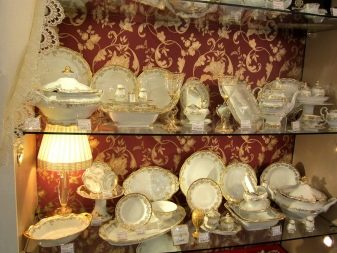
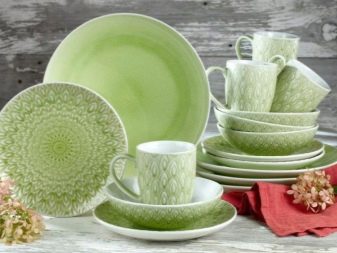
What's better?
It is impossible to unequivocally answer the question of which dishes will be better. Here you should focus on your own preferences and budget. If you want beautiful dishes for everyday use, it is better, of course, to give preference to faience, because if necessary, broken plates and cups can be easily and inexpensively replaced.
For aesthetes and lovers of everything subtle, we recommend porcelain dishes. With proper care, it is possible to keep it in the family for several generations, in addition, such products are appropriate for any holiday, they create a feeling of luxury and wealth.At the same time, earthenware products retain heat longer, they are inherent in a variety of shades, which gives more opportunities if you have a modern type of interior.
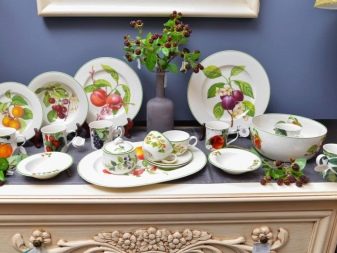
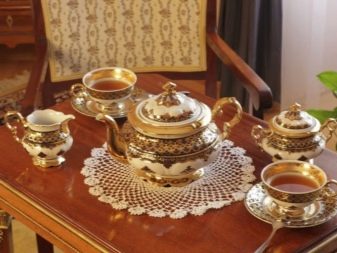
When choosing dishes for use, you should not give preference to the cheapest ones.
Be sure to study different manufacturers, compare the models they produce. Both earthenware and porcelain must have a high quality glaze, otherwise it may start to absorb water and odors. In addition, careful selection is also important because real materials are often replaced by fakes. To buy the original and not be disappointed in the materials forever, it is recommended to take note of a few rules.
- When purchasing dishes made of porcelain, you should ask the seller for quality certificates. This is the first step towards making the right choice.
- Hit the cup or plate with a spoon. Glass chimes will notify you that porcelain is in front of you. Also, it will not be superfluous to check the dishes by light - this will help to determine the authenticity, because only porcelain shines through.
- Remember, real porcelain won't be cheap. If you are offered products at a price lower than elsewhere, they are definitely dishonest sellers.
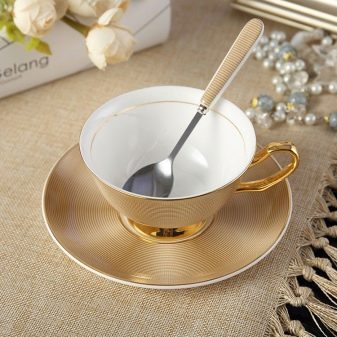

As for earthenware, it is almost never counterfeited, because dishes made from this material are recognizable everywhere. They can pass off faience as porcelain, but not vice versa. In addition, the production technology of this material is simple and fast, so it makes no sense to put fakes on the market.

How to take care of it properly?
It is no secret that any tableware will retain its aesthetic appearance only with proper care. The materials described here are no exception. Products of both types do not like too hot water temperatures, as well as their differences. Therefore, you will have to wash the dishes only in cool water, while you should forget about powder products and hard sponges. Use only mild soapy water or mild dishwashing liquid.
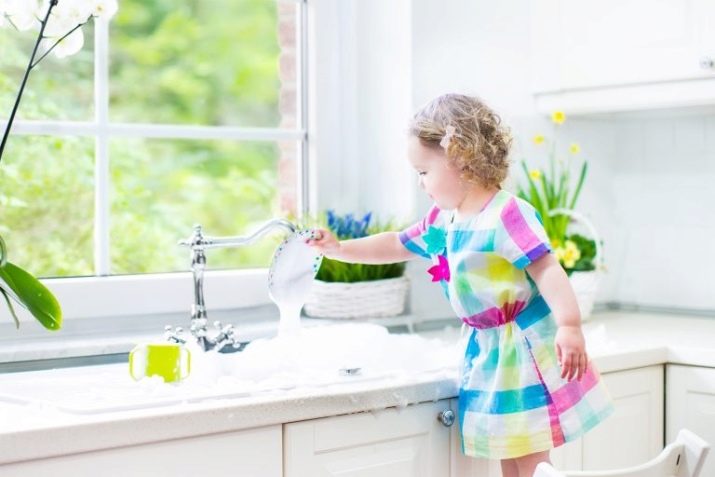
Sometimes, even with the most careful care, the porcelain can darken. But this is easy to deal with if you wipe the product with water and a little soda or use citric acid. This will whiten the surface, returning it to its original appearance.
If stains appear on the dishes, ammonia will help to remove them.
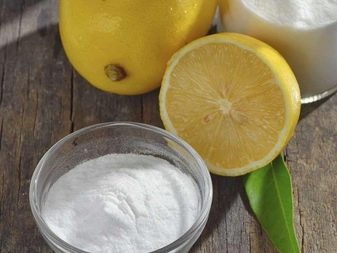

Cups and plates should be wiped off immediately, natural drying will cause unsightly stains and additional time-consuming polishing. If this is a service that you use every six months, the dishes are put in a box, wrapping each item with paper. The box should be located separately from the rest, boxes should be placed on it, other containers cannot.
Earthenware is allowed to be heated in a microwave oven, but the dishes should be perfect, without cracks or chips. The exposure to the stove should be short-lived. Such heating is prohibited for porcelain.

You can wash both types of products in the dishwasher, but only in a delicate mode and at a distance from each other. But in general, experts advise you to give preference to hand washing.
The differences between high-quality porcelain and fake in the next video.








